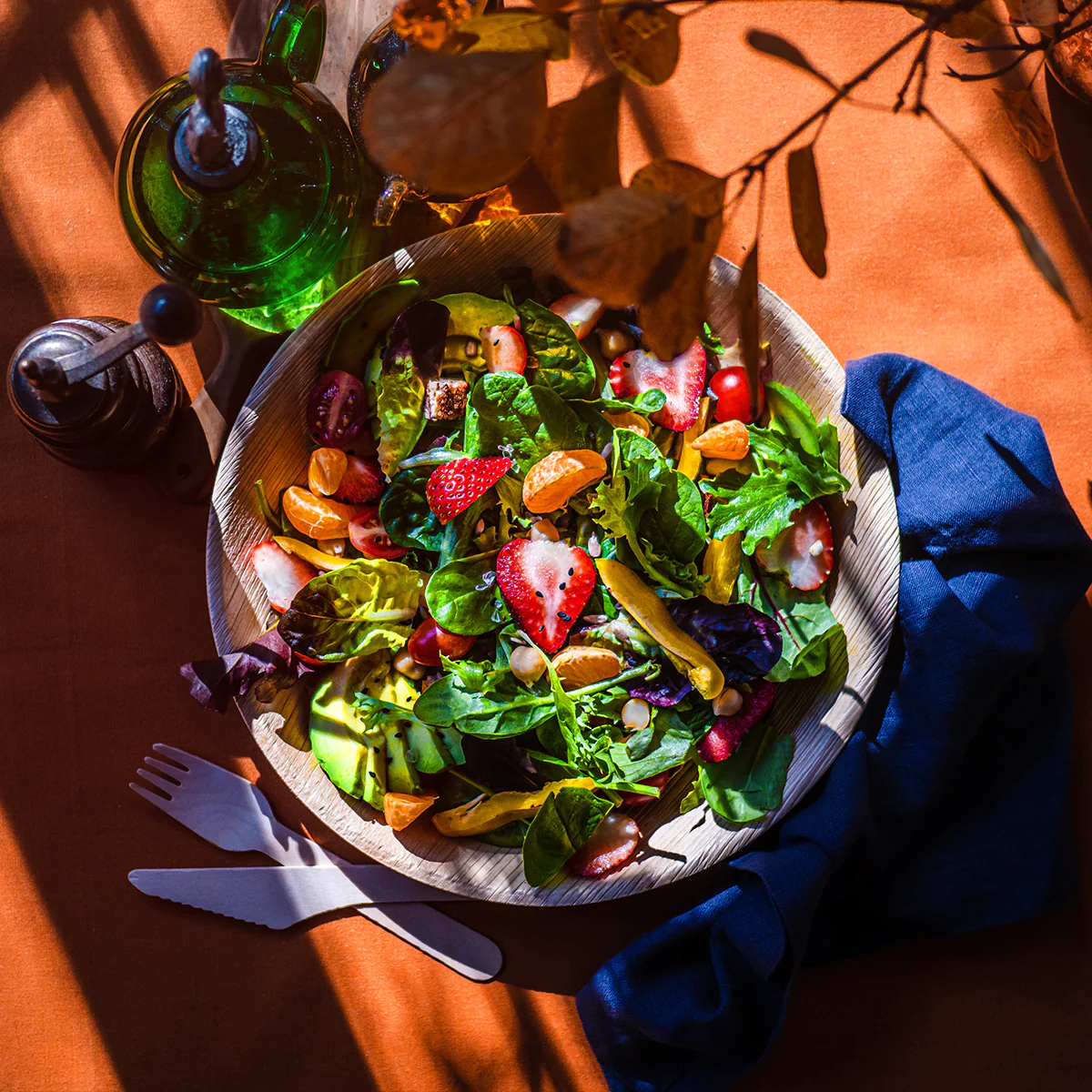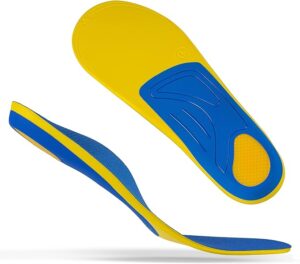
Palm Leaf Plates
In today’s environmentally conscious world, finding sustainable alternatives to everyday products is becoming increasingly important. One such eco-friendly option that has gained popularity in recent years is palm leaf plates. These plates not only provide a unique and rustic charm to your dining experience but also contribute to a greener planet. In this article, we will explore the benefits of using palm leaf plates and why they are an excellent choice for your culinary delights.
Introduction
In recent years, there has been a growing awareness of the need to reduce our carbon footprint and make sustainable choices in our daily lives. One area where this shift towards sustainability is evident is in the use of palm leaf plates. These plates are gaining popularity for their eco-friendly attributes and unique aesthetics, making them a preferred choice for individuals and businesses alike.
What Are Palm Leaf Plates?
Palm leaf plates, also known as Areca leaf plates, are dinnerware made from fallen palm leaves. These leaves are collected, cleaned, and molded into various plate sizes and shapes. The process of creating palm leaf plates is entirely natural, and no chemicals or additives are used, making them a safe and environmentally friendly choice.
Palm leaf plates offer a sustainable alternative to traditional disposable plates, which are often made from plastic or paper. These plates not only provide a unique and rustic charm to your dining experience but also contribute to a greener planet. They are gaining popularity for their eco-friendly attributes and unique aesthetics, making them a preferred choice for individuals and businesses seeking sustainable dining options.
The Making of Palm Leaf Plates
The making of palm leaf plates is a fascinating and eco-friendly process that involves several steps. Here’s an overview of how these sustainable dinnerware items are crafted:
- Gathering Fallen Palm Leaves: The process begins with the collection of fallen palm leaves. It’s essential to ensure that no harm is caused to the palm trees during this process, as sustainability is a key aspect of palm leaf plate production.
- Cleaning and Washing: The gathered palm leaves are thoroughly cleaned to remove dirt, debris, and any contaminants. Washing the leaves ensures that they are hygienic and safe for use in serving food.
- Soaking in Water: To make the palm leaves pliable and easy to work with, they are soaked in clean, fresh water. This soaking process softens the leaves, making them suitable for molding into various plate sizes and shapes.
- Artisanal Crafting: Skilled artisans then take these soaked palm leaves and shape them into plates of different sizes and designs. These artisans use their expertise to create plates that are not only functional but also visually appealing.
- Natural Drying: Once the palm leaf plates are formed, they are left to dry naturally in the sun. This step ensures that the plates become sturdy and durable. Natural drying is a crucial part of the process, as it maintains the plates’ eco-friendly and chemical-free nature.
The result of this meticulous process is a set of palm leaf plates that are both sustainable and aesthetically pleasing. These plates showcase the natural beauty of palm leaves and offer a unique dining experience that aligns with environmentally conscious values.
Why Choose Palm Leaf Plates?
Choosing palm leaf plates offers several compelling reasons, making them an excellent choice for environmentally conscious consumers and businesses. Here are some key reasons why you should consider palm leaf plates:
- Eco-Friendly: Palm leaf plates are a sustainable choice for the environment. They are made from a renewable resource – fallen palm leaves – which are abundant in many tropical regions. By using palm leaves that would otherwise go to waste, you contribute to the reduction of environmental waste.
- Biodegradable: Unlike plastic plates that can take hundreds of years to decompose in landfills, palm leaf plates are 100% biodegradable. They naturally decompose in a matter of months, returning to the earth without leaving a lasting ecological footprint. This makes them an environmentally responsible alternative to traditional disposable plates.
- Stylish and Unique: Palm leaf plates exude a natural and rustic charm that can enhance the presentation of your culinary creations. Their unique texture and appearance make them a favorite choice for stylish and eco-conscious individuals. Whether you’re hosting a casual gathering or an elegant event, palm leaf plates add a touch of sophistication to any table setting.
- Versatile Use: Palm leaf plates are versatile and can be used for various occasions. They are heat-resistant, making them suitable for hot and cold dishes, including appetizers, main courses, and desserts. Whether it’s a wedding, a picnic, a party, or everyday dining, palm leaf plates are a versatile and eco-friendly option.
- Reduces Plastic Waste: By choosing palm leaf plates over traditional disposable plastic plates, you help reduce the demand for single-use plastic products. This, in turn, contributes to less plastic waste in landfills and oceans, addressing the growing global plastic pollution problem.
- Supports Sustainable Practices: Purchasing palm leaf plates supports sustainable and ethical practices. The production of these plates often involves local artisans and small-scale businesses, providing employment opportunities in rural communities and promoting fair trade.
- Chemical-Free: Palm leaf plates are created without the use of chemicals or additives, making them a safe choice for serving food. You can enjoy your meals without worrying about harmful substances leaching into your food.
- Contributes to Conservation: By choosing palm leaf plates, you indirectly contribute to the conservation of palm trees and tropical ecosystems. These trees play a vital role in maintaining biodiversity and ecological balance in their native habitats.
In summary, palm leaf plates offer a unique combination of sustainability, style, and versatility. By opting for these eco-friendly dinnerware options, you not only reduce your environmental impact but also make a statement in favor of responsible consumption and a greener planet.
Uses of Palm Leaf Plates
Palm leaf plates are incredibly versatile and can be used in various settings and for a wide range of purposes. Their adaptability and eco-friendly attributes make them an excellent choice for different occasions. Here are some common uses of palm leaf plates:
- Events and Parties: Palm leaf plates are a popular choice for events and parties, both large and small. They add a touch of natural beauty to the table and create a rustic and elegant atmosphere. Whether it’s a wedding reception, a birthday party, or a corporate gathering, palm leaf plates can elevate the dining experience.
- Picnics and Outdoor Dining: If you’re planning a picnic or an outdoor meal, palm leaf plates are ideal. They are lightweight and easy to carry, making them convenient for picnics, barbecues, camping trips, and beach outings. Plus, they are sturdy enough to handle various types of food.
- Weddings and Special Occasions: Many couples opt for palm leaf plates for their wedding receptions and other special occasions. The natural and unique appearance of these plates adds an element of charm and sophistication to the event. They are perfect for serving appetizers, salads, main courses, and desserts.
- Catering and Food Service: Restaurants, catering services, and food trucks can benefit from using palm leaf plates. They not only provide an eco-friendly and stylish presentation for dishes but also align with a commitment to sustainable practices. Palm leaf plates are suitable for a wide range of cuisines and food types.
- Food Festivals and Food Trucks: Food festivals and food trucks often use palm leaf plates to serve their culinary creations. These plates not only showcase the food beautifully but also reflect the eco-conscious values of many food vendors and festival organizers.
- Everyday Dining: Palm leaf plates are not limited to special occasions; they can be used for everyday dining as well. Their heat resistance makes them suitable for serving hot meals, and their unique appearance can make everyday meals feel more special.
- Entertaining Guests at Home: When hosting guests at home, whether for a dinner party or a casual get-together, palm leaf plates can make a lasting impression. They are conversation starters and demonstrate your commitment to sustainability.
- Corporate Events: Companies that prioritize sustainability often use palm leaf plates for corporate events, meetings, and conferences. These plates align with the company’s eco-friendly values and leave a positive impression on attendees.
- Takeout and Food Delivery: As awareness of plastic pollution grows, some restaurants and food delivery services are switching to palm leaf plates for their takeout and delivery orders. This not only reduces single-use plastic waste but also enhances the customer’s dining experience.
- Educational Workshops: Educational institutions, workshops, and seminars that focus on sustainability may choose palm leaf plates as part of their commitment to eco-conscious practices.
In summary, palm leaf plates offer a versatile and eco-friendly alternative to traditional disposable dinnerware. Their uses extend across a wide range of settings, from formal events to casual dining and outdoor activities, making them a go-to choice for those who value sustainability without compromising style and functionality.
Palm Leaf Plates vs. Traditional Plates
When comparing palm leaf plates to traditional plates, such as plastic or paper options, several key distinctions become evident. Each type of plate has its advantages and disadvantages, making them suitable for different purposes. Let’s explore the differences between palm leaf plates and traditional plates:
Palm Leaf Plates:
1. Eco-Friendly:
- Advantage: Palm leaf plates are made from natural, renewable materials – fallen palm leaves. They are 100% biodegradable and do not contribute to long-term environmental waste.
- Disadvantage: They are intended for single-use, so they may not be suitable for those seeking reusable options.
2. Aesthetics:
- Advantage: Palm leaf plates have a unique, rustic charm that enhances the presentation of dishes. They add an organic and stylish touch to any table setting.
- Disadvantage: The appearance may not match formal, fine-dining occasions where traditional porcelain or china plates are preferred.
3. Heat Resistance:
- Advantage: Palm leaf plates are heat-resistant and can handle both hot and cold foods, making them versatile for various dishes.
- Disadvantage: They may not retain heat as well as traditional ceramic or porcelain plates, which are ideal for keeping food warm.
4. Chemical-Free:
- Advantage: Palm leaf plates are chemical-free and safe for serving food. They do not leach harmful substances into the food.
- Disadvantage: They may not be as smooth or polished as traditional plates, which some people may find less appealing.
5. Biodegradability:
- Advantage: Palm leaf plates naturally decompose within a few months, leaving no lasting impact on the environment.
- Disadvantage: Traditional plates, especially plastic ones, can take hundreds of years to break down in landfills.
Traditional Plates (Plastic or Paper):
1. Reusability:
- Advantage: Traditional plates can be reusable, which can be cost-effective and reduce waste over time.
- Disadvantage: Plastic plates contribute to plastic pollution if not recycled, and paper plates, while biodegradable, may not be as durable for multiple uses.
2. Appearance:
- Advantage: Traditional plates come in various designs, colors, and materials, making them suitable for both casual and formal dining occasions.
- Disadvantage: They may not have the unique, natural appearance of palm leaf plates.
3. Durability:
- Advantage: Traditional plates, especially ceramic or porcelain ones, are durable and long-lasting.
- Disadvantage: They do not have the same eco-friendly credentials as palm leaf plates and contribute to resource consumption.
4. Dishwasher and Microwave Safe:
- Advantage: Many traditional plates are dishwasher and microwave safe, offering convenience in cleaning and reheating food.
- Disadvantage: Palm leaf plates are not suitable for dishwashers or microwaves due to their natural materials.
In summary, the choice between palm leaf plates and traditional plates depends on your specific needs and values. Palm leaf plates are an excellent eco-friendly option for single-use occasions, while traditional plates offer versatility and reusability for different dining situations. The decision ultimately comes down to your preference for sustainability, aesthetics, and functionality.
Where to Buy Palm Leaf Plates
You can find palm leaf plates available for purchase from various sources, including physical stores and online retailers. If you’re looking for a convenient and reliable online platform to buy palm leaf plates, we recommend visiting our website.
Here are some other places where you can typically find palm leaf plates:
- Specialty Eco-Friendly Stores: Many stores that focus on eco-friendly and sustainable products stock palm leaf plates. These stores often prioritize environmentally conscious options, making them a great place to explore palm leaf dinnerware.
- Online Marketplaces: Popular online marketplaces like Amazon, eBay, and Etsy often have a wide selection of palm leaf plates available from various sellers. Be sure to read product descriptions and reviews to ensure quality and authenticity.
- Wholesale Suppliers: If you require palm leaf plates in bulk quantities for a restaurant, catering business, or event, consider reaching out to wholesale suppliers or distributors. They may offer competitive prices and large quantities.
- Local Artisan Markets: In some areas, local artisans and craftsmen produce palm leaf plates. Visiting local artisan markets or craft fairs can be a great way to support small-scale producers and find unique palm leaf plate designs.
- Online Retailers Specializing in Eco-Friendly Products: Several online retailers specialize in eco-friendly and sustainable products. These platforms curate a range of environmentally conscious options, including palm leaf plates.
When purchasing palm leaf plates, be sure to consider factors such as quantity, size, and any specific design preferences you may have. Additionally, check the product descriptions to ensure that the plates meet your needs and expectations. Whether you choose to buy from our recommended website or another source, palm leaf plates offer an eco-friendly and stylish alternative for your dining needs.
How to Care for Palm Leaf Plates
Caring for palm leaf plates is straightforward and requires minimal effort. These eco-friendly dinnerware items are durable and heat-resistant, making them suitable for a wide range of culinary uses. Here are some tips on how to care for palm leaf plates:
- Use for Intended Purposes: Palm leaf plates are designed for serving food. Use them as you would use any other disposable or eco-friendly plates for meals, snacks, and desserts.
- Avoid Prolonged Soaking: While palm leaf plates are water-resistant and can handle wet foods, it’s best to avoid prolonged soaking in water. After use, rinse them briefly if needed, but do not immerse them in water for extended periods.
- Avoid Excessive Heat: Palm leaf plates are heat-resistant and can withstand hot foods. However, they are not suitable for use in ovens, microwaves, or on stovetops. Avoid exposing them to direct flames or extreme heat.
- Dispose of Properly: After use, you can dispose of palm leaf plates in a compost bin or pile. They are 100% biodegradable and will naturally decompose in a few months, returning to the earth without leaving a lasting impact on the environment.
- Storage: If you have unused palm leaf plates, store them in a cool, dry place away from direct sunlight. This will help maintain their integrity and prevent any potential moisture-related issues.
- Avoid Harsh Chemicals: Do not use bleach, harsh detergents, or abrasive scrubbers on palm leaf plates. Since they are made from natural materials and are chemical-free, these substances are unnecessary and can potentially damage the plates.
- Serve a Variety of Foods: Palm leaf plates are versatile and can be used for a wide range of dishes, including hot and cold foods, appetizers, salads, main courses, and desserts. Enjoy the freedom to serve your favorite meals on them.
- Educate Others: If you’re using palm leaf plates at events or gatherings, provide information to your guests about their eco-friendly nature and proper disposal. Encourage them to embrace sustainable practices.
By following these simple care instructions, you can ensure that your palm leaf plates maintain their quality and eco-friendliness. These plates are not only practical but also environmentally responsible, making them an excellent choice for those who value sustainability in their dining choices.
Palm Leaf Plates in Events and Parties
Palm leaf plates have become a popular choice for events and parties of all kinds. Their unique blend of eco-friendliness and rustic elegance makes them an excellent option for enhancing the dining experience at gatherings. Here’s how palm leaf plates can be a standout feature in events and parties:
- Weddings: Palm leaf plates have gained popularity as a choice for wedding receptions. They offer a touch of natural beauty and elegance that complements the atmosphere of a wedding celebration. Whether you’re hosting a formal banquet or an outdoor rustic wedding, palm leaf plates can add a charming and eco-conscious element to the table setting.
- Birthday Parties: For birthday parties, especially those with eco-friendly themes, palm leaf plates are an ideal choice. They can be used for serving cakes, snacks, and a variety of party foods. The plates’ unique appearance adds an appealing visual element to the celebration.
- Corporate Events: Companies that prioritize sustainability often choose palm leaf plates for their corporate events, meetings, and conferences. These plates align with the company’s commitment to eco-conscious practices and make a positive impression on attendees.
- Outdoor Picnics and BBQs: Palm leaf plates are lightweight and easy to transport, making them perfect for picnics, barbecues, and outdoor gatherings. They are sturdy enough to handle a range of dishes, including grilled meats, salads, and side dishes.
- Holiday Parties: Whether it’s a Christmas dinner, a Thanksgiving feast, or a Fourth of July barbecue, palm leaf plates can be a stylish addition to holiday gatherings. They can complement holiday-themed decor and create a warm and inviting atmosphere.
- Baby Showers and Bridal Showers: Celebrate special occasions like baby showers and bridal showers with palm leaf plates. Their eco-friendly and stylish design can add a touch of sophistication to these memorable events.
- Festivals and Cultural Celebrations: Palm leaf plates are a fitting choice for cultural festivals and celebrations. They align with sustainable and traditional values and can be used to serve traditional dishes during cultural events.
- Outdoor Music Festivals and Food Truck Events: Food vendors at outdoor music festivals and food truck events often use palm leaf plates to serve a variety of festival foods. These plates not only showcase the food beautifully but also reflect the event’s commitment to sustainability.
- Backyard Gatherings: Whether you’re hosting a casual backyard get-together or a more formal outdoor dinner party, palm leaf plates can add a touch of sophistication to your outdoor dining experience.
- Themed Parties: For themed parties like luau, beach, or tropical-themed events, palm leaf plates can fit seamlessly into the theme, enhancing the overall ambiance.
Incorporating palm leaf plates into events and parties is a conscious choice that not only elevates the dining experience but also promotes sustainable practices. Their versatility, eco-friendliness, and unique aesthetics make them a go-to option for hosts and event planners looking to make a positive impact on both guests and the environment.
Are Palm Leaf Plates Safe to Use?
Yes, palm leaf plates are safe to use. They undergo a thorough cleaning and sanitation process during production to ensure they are free from contaminants. Here are some reasons why palm leaf plates are considered safe for serving food:
- Chemical-Free: Palm leaf plates are made from natural and organic materials—fallen palm leaves. They do not contain any chemicals, additives, or synthetic substances. This means that there are no harmful chemicals to leach into the food when using these plates.
- Natural Cleaning Process: The production process for palm leaf plates typically includes cleaning the palm leaves thoroughly. This cleaning process removes dirt, debris, and potential contaminants, leaving the plates in a clean and hygienic condition.
- Heat-Resistant: Palm leaf plates are heat-resistant, allowing them to safely handle hot and warm foods without warping or releasing toxins. You can confidently serve a variety of dishes on these plates without worrying about their safety.
- Sanitary Production Conditions: Palm leaf plate manufacturers often adhere to strict hygiene and quality control standards. They take measures to ensure that the plates are produced in sanitary conditions, reducing the risk of contamination.
- Food-Safe Regulations: In many regions, palm leaf plates are subject to food safety regulations and standards. Manufacturers and suppliers are required to meet these standards to ensure the safety of their products.
- Versatility: Palm leaf plates are suitable for serving a wide range of food items, from appetizers to main courses and desserts. Their versatility and heat resistance make them a practical choice for various culinary needs.
It’s important to note that while palm leaf plates are generally safe for serving food, they are intended for single-use. Reusing them may compromise their integrity, hygiene, and safety. Additionally, palm leaf plates should not be used in ovens, microwaves, or on stovetops, as they are not designed for direct exposure to high heat sources.
In summary, palm leaf plates are a safe and eco-friendly option for serving food, making them a popular choice for individuals, businesses, and event planners who prioritize both sustainability and food safety.
Palm Leaf Plates: A Global Trend
Palm leaf plates have evolved into a global trend, transcending geographical boundaries and gaining popularity in various parts of the world. Their unique combination of sustainability, aesthetics, and functionality has contributed to their rise as a sought-after dining choice. Here’s a look at why palm leaf plates have become a global trend:
- Eco-Friendly Appeal: In an era of heightened environmental awareness, palm leaf plates have captured the attention of eco-conscious individuals and businesses worldwide. The use of fallen palm leaves, a renewable resource, aligns perfectly with the desire to reduce the ecological footprint associated with disposable tableware.
- Biodegradability: Palm leaf plates are 100% biodegradable, which sets them apart from traditional disposable plates made from plastic or paper. They naturally decompose within a few months, making them an environmentally responsible choice.
- Stylish and Unique Design: Palm leaf plates boast a natural and rustic charm that elevates the presentation of dishes. Their unique texture and appearance add a touch of sophistication to various dining settings, from casual gatherings to formal events.
- Versatility: These plates are versatile and can be used for a wide range of culinary occasions, from everyday meals to special events. Their heat resistance makes them suitable for serving hot and cold dishes, further enhancing their practicality.
- Local Artisanal Craftsmanship: The production of palm leaf plates often involves skilled artisans and small-scale businesses in the regions where palm trees grow. This support for local craftsmanship and fair trade practices resonates with consumers looking to make ethically conscious choices.
- International Availability: Palm leaf plates are readily available through online marketplaces, specialty stores, and eco-friendly retailers. Their accessibility has allowed people from different countries and backgrounds to incorporate them into their dining experiences.
- Global Events and Festivals: Palm leaf plates have made appearances at international events, festivals, and conventions. Their use in such settings showcases their suitability for large gatherings and their ability to leave a positive impression on a global scale.
- Social Media Influence: The trend of sharing sustainable and aesthetically pleasing choices on social media platforms has contributed to the popularity of palm leaf plates. Their visually appealing designs and eco-friendly attributes often make them a topic of discussion and admiration.
- Corporate and Institutional Adoption: Many businesses, educational institutions, and organizations have embraced palm leaf plates as part of their commitment to sustainability. This corporate adoption has further propelled the trend and highlighted its relevance in professional settings.
- Environmental Consciousness: As individuals and communities become more conscious of the environmental impact of their choices, palm leaf plates serve as a tangible way to demonstrate a commitment to sustainable living.
In summary, palm leaf plates have transcended borders and cultural boundaries to become a global trend. Their eco-friendly nature, unique aesthetics, and versatility make them a compelling choice for a wide range of consumers and occasions. As the world continues to prioritize sustainability, palm leaf plates are likely to remain at the forefront of the global movement towards greener dining options.
The Future of Sustainable Dining
The future of sustainable dining is an exciting and promising prospect as consumers, businesses, and the food industry as a whole increasingly recognize the importance of environmentally responsible choices. Sustainable dining practices are poised to play a significant role in shaping the way we eat and enjoy food. Here’s a glimpse into what the future of sustainable dining may look like:
- Widespread Adoption of Eco-Friendly Alternatives: Sustainable dining will see the widespread adoption of eco-friendly alternatives to traditional dining products. This includes the continued use of palm leaf plates, bamboo utensils, and biodegradable packaging as more consumers and businesses prioritize sustainability.
- Locally Sourced and Seasonal Ingredients: Sustainable dining will emphasize the use of locally sourced and seasonal ingredients. This reduces the carbon footprint associated with transporting food over long distances and supports local farmers and producers.
- Reduced Food Waste: Sustainable dining practices will continue to focus on reducing food waste at all levels of the supply chain, from production and distribution to restaurants and households. Innovations in food preservation and storage will become more accessible.
- Plant-Based and Alternative Proteins: The shift towards plant-based diets and alternative protein sources will gain momentum. Sustainable dining will offer a diverse range of plant-based dishes that cater to a growing audience of vegans, vegetarians, and flexitarians.
- Regenerative Agriculture: Regenerative agriculture practices, which aim to restore soil health and biodiversity, will become integral to sustainable dining. Restaurants and food producers will increasingly source ingredients from regenerative farms.
- Reduction in Single-Use Plastics: The use of single-use plastics in dining establishments will continue to decline. Reusable, recyclable, and compostable packaging and tableware will become the norm.
- Energy Efficiency and Renewable Energy: Sustainable restaurants will prioritize energy efficiency and use renewable energy sources to power their operations. This includes efficient lighting, heating, and cooling systems, as well as solar panels.
- Circular Economy Initiatives: Sustainable dining will embrace circular economy initiatives, such as composting and recycling organic waste, to minimize environmental impact and contribute to soil health.
- Consumer Awareness and Education: Consumers will become increasingly informed about the sustainability practices of the restaurants they patronize. Dining establishments will engage in transparency and educate customers about their sourcing and environmental efforts.
- Collaboration Across the Industry: The food industry will see greater collaboration among stakeholders, including restaurants, suppliers, policymakers, and environmental organizations, to develop and implement sustainable dining practices.
- Innovative Food Technologies: Sustainable dining will benefit from innovative food technologies, such as lab-grown meat and precision agriculture, which can reduce resource consumption and environmental impact.
- Government Regulations and Incentives: Governments around the world will introduce regulations and incentives to encourage sustainable dining practices, such as tax incentives for eco-friendly restaurants and regulations against food waste.
In conclusion, the future of sustainable dining is a dynamic and evolving landscape driven by the growing awareness of environmental issues and the desire for healthier, more responsible food choices. As sustainability becomes a core value in the culinary world, we can expect to see innovative solutions, diverse menus, and a greater emphasis on the environmental and ethical impact of what we eat.
Customer Testimonials
Certainly! Here are a few customer testimonials that highlight the positive experiences of those who have used palm leaf plates for their dining needs:
- Sarah W. – Eco-Conscious Hostess:
- “I hosted a garden party last weekend and decided to use palm leaf plates. My guests were not only impressed by the unique and natural look of the plates but also appreciated the fact that they were eco-friendly. It made me feel good knowing that I was making a sustainable choice while entertaining.”
- Michael R. – Catering Business Owner:
- “We switched to palm leaf plates for our catering business, and the feedback has been overwhelmingly positive. Our clients love the stylish and rustic appeal of these plates, and we’re proud to offer an eco-friendly option. It’s a win-win for us and the environment.”
- Emily S. – Wedding Planner:
- “Palm leaf plates have become a staple in my wedding planning toolkit. They add a touch of elegance to outdoor weddings and blend seamlessly with various themes. Brides and grooms appreciate the sustainability factor, and they’re a hit with guests.”
- David M. – Outdoor Enthusiast:
- “As someone who enjoys outdoor adventures, palm leaf plates have become my go-to choice for picnics and camping trips. They are lightweight, sturdy, and environmentally friendly. Plus, they look great in outdoor settings.”
- Linda C. – Restaurant Regular:
- “I dine at a local restaurant that uses palm leaf plates, and I always appreciate the natural and earthy vibe it adds to the dining experience. It’s a reminder that even in a small way, we can make eco-conscious choices without compromising on quality.”
- Jason P. – Sustainable Living Advocate:
- “Palm leaf plates are a perfect fit for my sustainable lifestyle. I use them at home regularly, and they’ve become a conversation starter with guests. I love knowing that I’m making a positive impact on the planet with every meal.”
These customer testimonials reflect the growing appreciation for palm leaf plates, not only for their eco-friendly attributes but also for their unique aesthetic appeal. They demonstrate how palm leaf plates have found a place in various settings, from casual gatherings to special events, and have resonated with individuals committed to sustainable living and responsible dining choices.
Conclusion
Palm leaf plates are a fantastic choice for those looking to make environmentally conscious decisions without compromising on style and functionality. Their eco-friendliness, biodegradability, and unique aesthetics make them an ideal option for a greener dining experience.
Frequently Asked Questions (FAQs)
1. Are palm leaf plates reusable?
- No, palm leaf plates are designed for single-use but are fully biodegradable.
2. Can I microwave food on palm leaf plates?
- Yes, palm leaf plates are microwave-safe.
3. Do palm leaf plates have any odor or taste?
- No, they are odorless and tasteless, ensuring that your food’s flavor remains unaffected.
4. Are palm leaf plates suitable for both hot and cold foods?
- Yes, they are suitable for a wide range of temperatures, making them versatile for various dishes.
5. How long do palm leaf plates take to decompose?
- Palm leaf plates typically decompose within 2 to 3 months, depending on environmental conditions.







